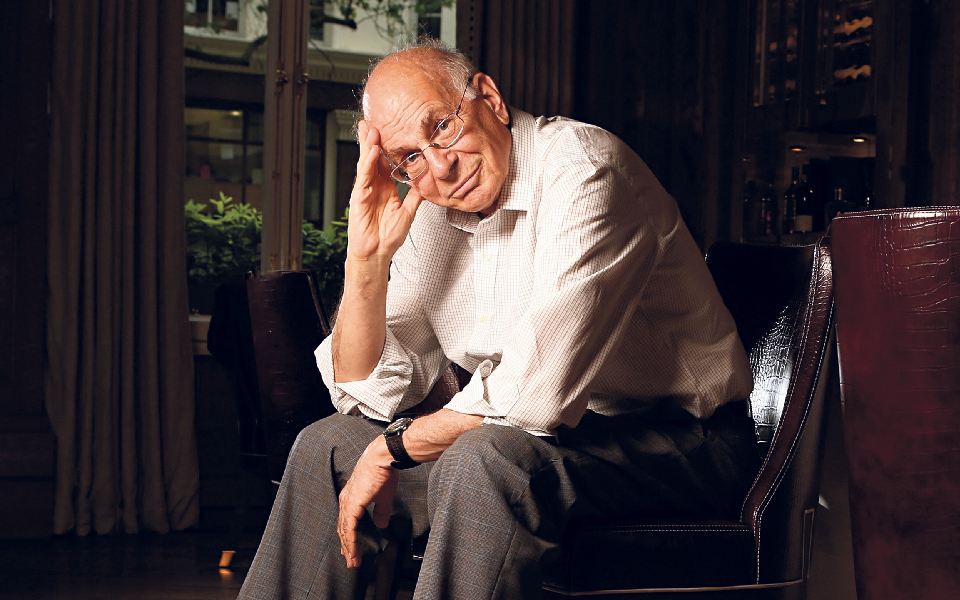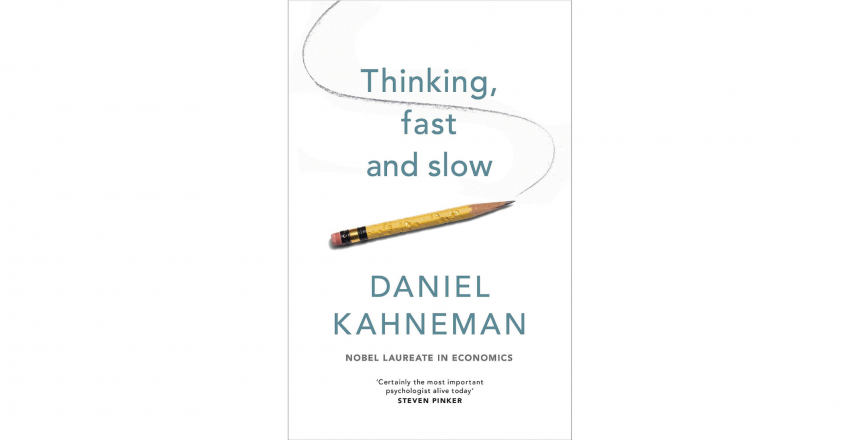Thinking, Fast and Slow by Daniel Kahneman is the third of his five-volume series called Thinking, Fast and Fatigued. In this book, he discusses the effects of shortsightedness. When we make judgments, the need for a more critical but reflective mind in everyday life and how these three factors interact to create different types of thinking. He also discusses the implications of all these factors in our decision-making process and the different styles of thinking that we might adopt in our lives. It is very good at explaining what all the various methods of thinking are all about and why each one is so important.
The main thesis of Thinking, Fast and Slow
People have different ways of thinking. When we think fast we are likely to focus on immediate details and they are usually what we think about first. We use a more focused type of reasoning and this is often the case with people who are particularly quick at thinking. People who are slower at thinking often have an active but somewhat abstract style of thinking. People who are more focused and analytical are those who tend to think about more long-term aspects. They are more likely to focus on the larger picture when making judgments about events and people. If we follow these theories closely then it makes sense to assume that if we think really fast it will lead to instant decisions. However, if we slow down our thinking and look more carefully before we make decisions about the future, that can lead us to better decisions.
The Thinking, Fast and Slow shows how different methods of thinking can affect judgments. People often have a tendency to overestimate their own skills and knowledge of the world because they think they know all the answers. The problem is that most people never do a reality check or a self-evaluation on their judgments. The problem with this kind of thinking is that we usually think that the answer to every question is correct, but we are rarely able to back it up or verify our own predictions. If you are looking for a good book to read on this subject then this is a must-read.
Summary
From the highly expected Thinking, Fast and Slow, Kahneman takes us onto a radical tour of their brain and clarifies that the 2 systems which push the way we believe. System 1 is quick, intuitive, and emotional; System 2 is much slower, more deliberative, and more logical. Kahneman exposes the extraordinary capacities. The flaws and biases — of rapid thinking and shows that the pervasive influence of instinctive feelings on our ideas and behavior. Such as the effect of loss aversion and overconfidence on corporate plans, the struggles of properly framing dangers on the job, and in the home. All these might be understood simply by understanding how both systems work together to form our conclusions.
Engaging with the reader in a dynamic conversation about how we believe, Kahneman shows where we can and cannot expect our intuitions and we could tap into the advantages of slow thinking. He provides insightful and practical insights into the way that decisions are made in both our business and our private lives–and we can use unique methods to guard against the mental glitches which often get us into trouble. Thinking, Fast and Slow will change How You Consider thinking.
Your “Two Systems” and What They Mean
Whenever you need to create a sense of something, you consider it. To understand this procedure, think about a version that states individuals apply two cognitive processes.
The first is “System 1,” or even the psychological processing which reads feelings and manages your automatic abilities, such as driving your automobile or adding two and two. System 1 takes more than your thinking if you understand simple statements (like “complete the term bread and…”’), automatically turn to determine where a sound is coming from or grimace if you find a grisly picture. System 1 provides related meanings (like stereotypes) quickly and involuntarily.
By comparison, you use “System 2” if you are focusing on particular details, such as counting or figuring out how to complete your income tax forms. System 2 implements effort knowingly, like if you do complex mathematics, attempt new physical pursuits, or look for a particular individual in a bunch. System 2 believing is slower, however, you want it to get systematic thinking procedures like formal logic.
Human beings have a tendency to appreciate the measured System 2 while blowing off mechanical System 1, but the truth is quite a bit more complex. These psychological processes take part in a “division of labor” as it comes to believing, and they always interact. You usually reside in System 1 world, in which its rapid processing is very efficient. In reality, you may be just about a job in System two, get distracted or tired, and discover that you have altered over to System 1 without even realizing it.
Duality and Collaboration
That strategy you use and the way you believe depends a good deal on the effort you’re expending. If you’re doing something simple, like walking on a known route, you are using System 1 and also have a great deal of cognitive ability left for believing. Should you push the speed to a rate walk, then System 2 buttons to keep your own effort. Recent laboratory studies reveal that extreme System two concentration enhances the body’s blood glucose levels. If your System 2 is active, you are more likely to stereotype, give into temptation, or consider problems just superficially.
Making Meaning, Making Mistakes
System 1 favors the world to become connected and purposeful, so if you’re dealing with just two different details, it is going to assume they are connected. It attempts to market cause-and-effect explanations. Likewise, when you see a little information, your System 1 supposes that you have got the entire story. By way of instance, if all you need to go on is a person’s look, your System 1 will fill in everything you do not understand — that is the “halo effect” By way of instance if an athlete is great looking, you are going to assume he or she’s also proficient.
Distorted Reality and Optimism
Simplification is currently at work from the “story fallacy,” or the mind’s tendency toward the simple, concrete and cohesive rather than the theoretical, vague, and contradictory. Folks derive meaning from stories that highlight individual traits like skill and merit but disregard the role of fortune and statistical things. You may tend to “concentrate on a couple of sensational events that occurred instead of on the innumerable occasions that didn’t occur.” Because of “hindsight bias,” you may distort fact by realigning your memories of occasions to jibe with fresh details. And when telling tales about events you are involved with, you are generally overly positive and conducive to overvaluing your abilities comparative to those others.
This intense, pervasive optimism is helpful for the market in several ways because inventors and entrepreneurs have a tendency to start new companies all of the time, indicating the overwhelming odds against them. Despite understanding that approximately just a third of ventures make it to their fifth anniversary, over 80 percent of American entrepreneurs speed their capacity to overcome that statistic as large; entirely a third” stated their possibility of neglecting was zero”
“Two Selves,” One Mind
As two systems interact in mind, two selves clash over the standard of your experiences. The “experiencing self” is the part of you that resides in your life; the “recalling self” is the component that assesses the experiences you’ve got, and “makes conclusions” about the long run. For the recalling self, happiness isn’t accumulative, and the last phases of any occasion play a crucial part in your recollection of its characteristics.
Your recalling self’s appraisal of your entire life story is 1 part of the way you judge whether you’re happy. You rate your own life by criteria or targets that you set. The moment-to-moment evaluations of your undergoing self provide another side of your own happiness. These decisions may conflict since they account for various facets of reality. Function advantages and status that impact “overall job satisfaction” don’t affect people’s everyday moods on the job. Instead, job circumstance contributes to enjoyment, including these variables as conversing with co-workers and being liberated from”time “
Know how your brain works
Recognizing how these unique mental systems operate can help you understand that the only rational beings preferred with economic theory are fictional and that actual humans want help making better decisions in their own financial and lifestyle decisions. Knowing how your brain works might help you advocate for policies that require these issues into consideration. The converse can also be true. Since your brain does not work optimally in most instances, rules must protect people from individuals who’d “intentionally exploit their flaws”. Because folks find it hard to catch glitches arising within their System 1 processing system.

Brief Quotes
“Odd as it may seem, I am my remembering self, and the experiencing self, who does my living, is like a stranger to me.” ― Daniel Kahneman, Thinking, Fast and Slow
“Nothing in life is as important as you think it is, while you are thinking about it” ― Daniel Kahneman, Thinking, Fast and Slow
“We can be blind to the obvious, and we are also blind to our blindness.” ― Daniel Kahneman, Thinking, Fast and Slow
“Familiarity breeds liking.” ― Daniel Kahneman, Thinking, Fast and Slow
“The premise of this book is that it is easier to recognize other people’s mistakes than our own.” ― Daniel Kahneman, Thinking, Fast and Slow
Conclusion
- To know how thinking works, think about this: people utilize two cognitive processes.
- “System 1” operates readily and mechanically and does not require much effort; it creates quick conclusions based on recognizable patterns.
- “System 2” requires more effort; it takes extreme focus and functions methodically.
- People like to create easy stories from a complicated reality. They hunt triggers on arbitrary occasions, consider infrequent events likely and heavy that the import of the encounters. Both of these systems interact always, but not necessarily easily.
- “Hindsight bias” makes you distort the truth by realigning your memories of occasions to jibe with fresh details.
- “Loss aversion” and also the”endowment effect” affect the way you gauge risk and value.
- Our”two selves” evaluate your life experiences otherwise.
- Your own “experiencing self” resides in your lifetime; your “recalling self” assesses your adventures, draws lessons from them, and determines your future.
- Both of these approaches and insecurities disprove economic concepts that say that individuals behave rationally.
Similar Books
You Are Not So Smart by David McRaney
Quiet: The Power of Introverts in a World That Can’t Stop Talking by Susan Cain
Nudge: Improving Decisions About Health, Wealth, and Happiness by Richard H. Thaler, Cass R. Sunstein
Man’s Search for Meaning by Viktor E. Frankl
Blink: The Power of Thinking Without Thinking by Malcolm Gladwell
Why We Recommend Thinking, Fast and Slow by Daniel Kahneman
The topics that Nobel Prize winner Daniel Kahneman addresses are equally complicated and essential to the individual brain. He asks you to consider thinking by thinking about the way your thoughts routinely contradicts itself, distorts information, and misleads you. His prose is lucid, his rationale rigorous and also his honesty refreshing. Throughout the book Kahneman illustrates conflicted thinking with illustrations from his own life. The outcome is a somewhat slow read, but ultimately rewarding experience. This book is suggested to anyone who’s interested in neuroscience and neuroeconomics and also to those who wish to learn new ideas on thinking.
If you like to get this kind of review for your podcasts, E-book, and other publications, Click Here.
